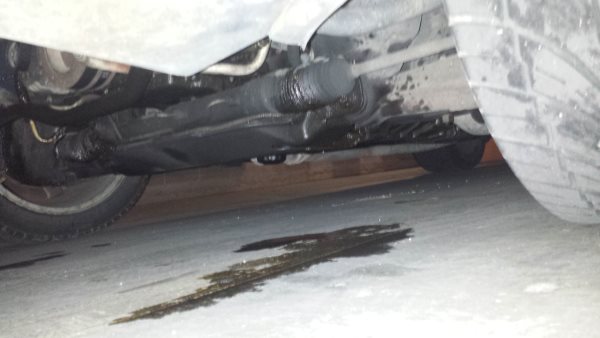Introduction
Imagine navigating your car through a bustling city, only to encounter a disconcerting whine or groan emanating from beneath the hood. If your power steering system is the source of these noises, you may be facing a power steering fluid leak. Ignoring this issue can compromise your vehicle’s safety and handling, potentially leading to costly repairs down the road. In this comprehensive guide, we will delve into the intricacies of power steering systems, explore the telltale signs of a fluid leak, and provide step-by-step instructions on how to effectively resolve the problem.

Image: rxmechanic.com
Understanding the Power Steering System
At the heart of your vehicle’s steering system lies a hydraulic or electric mechanism called the power steering system. This system assists you in effortlessly steering your car by amplifying the force applied to the steering wheel. In hydraulic systems, fluid is pumped through the system, providing pressure that assists in turning the wheels.
Detecting Power Steering Fluid Leaks
The symptoms of a power steering fluid leak can manifest in various ways:
- Visible Fluid Leakage: If you notice a reddish or clear fluid leaking from under your car, especially when parked, you may have a power steering fluid leak.
- Steering Wheel Difficulty: A decrease in power steering assistance, making it harder to steer the car, can indicate low fluid levels.
- Whining or Groaning Noises: The power steering pump may produce unusual noises such as whining or groaning due to low fluid levels.
- Dashboard Warning Light: Some vehicles have a dedicated warning light that illuminates when power steering fluid levels are low.
Step-by-Step Guide to Fixing a Power Steering Fluid Leak
- Safety First: Before starting any work, park your vehicle on a flat surface, engage the parking brake, and allow the engine to cool.
- Locate the Leak Source: Lift the hood and carefully inspect the power steering system components, including hoses, lines, and seals, for signs of leaks.
- Check Fluid Level: Use a dipstick or sight glass to check the power steering fluid level. If the fluid is below the recommended level, it may indicate a leak.
- Inspect Hoses and Lines: Examine the hoses and lines that carry the power steering fluid for cracks, abrasions, or loose connections. Replace any damaged components.
- Check Seals and Gaskets: Look for worn or damaged seals and gaskets around the power steering pump, steering rack, and other components. Replace them as needed.
- Tighten Loose Connections: Use a wrench to tighten any loose bolts or clamps securing the hoses, lines, and components of the power steering system.
- Inspect Power Steering Pump: Remove the power steering pump and check for leaks or damage to its seals. If necessary, replace the pump.
- Bleed the System: Once the leak is repaired, top up the fluid and bleed the system to remove any trapped air. This involves turning the steering wheel lock-to-lock several times.
- Monitor Fluid Level: After bleeding the system, keep a close eye on the fluid level. If the fluid level drops again, further inspection may be required to identify a more significant leak.

Image: grimmermotors.co.nz
How To Fix A Power Steering Fluid Leak
Conclusion
Fixing a power steering fluid leak requires a systematic approach and attention to detail. By following the steps outlined in this guide, you can effectively diagnose and resolve the issue, restoring your vehicle’s steering performance and ensuring your safety on the road. Remember to conduct regular inspections and maintain proper fluid levels to prevent future leaks. If you encounter any difficulties or suspect a more complex problem, do not hesitate to consult a qualified mechanic for assistance.